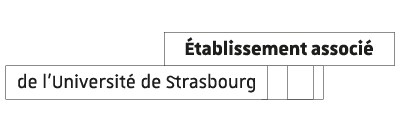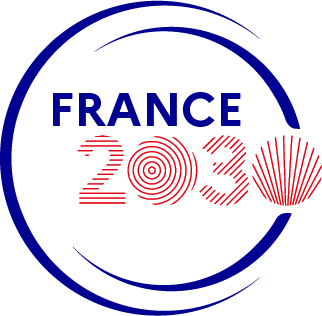Focus on the design, characterization and production of hierarchical and functional multi-composite materials with nanoscale precision for applications to improve energy user, the environment and health outcomes.
Important information
Summary
Good to know
Voir la version française (FR)
Ambitions
By combining fundamental knowledge in chemistry, physics, nanoscience, and biology, HiFunMat aims at developing and characterizing new composite materials with appealing properties and outstanding applications. The design of such materials is based on the concept of the multi-scale composition control as well as the spatial arrangement of the building block. Innovative strategies, such as 3D printing, microfluidic, foam, and multi-step protocols, will be used for the assembly of (multi)functionalized building blocks, such as (macro)molecules, (nano)particles…. Drawing inspiration from the smart biological systems, capable to process information and react under an external stimulus, the ambition of HiFunMat is to conceive “active materials”, exhibiting features analogous to the biological systems.
Thematics and research challenges
Ambition 1: Meeting the strong demand in the industry for people with a solid background in materials science by offering adapted and interdisciplinary training to understand all the dimensions of innovation and valorization. This is essential to meet future social challenges (energy, environment, health).
Ambition 2: Designing and synthesizing elementary molecular building blocks for the construction of hierarchical functional materials, developing new organic synthesis strategies, and promoting environmentally friendly processes and raw materials.
Ambition 3: Developing materials with fine control of their surface characteristics to obtain adaptable and reversible properties towards their environment. One of the challenges is to control the assembly of elementary building blocks with the spatial and temporal precision thanks to the interactions between the building blocks and the surface. The final properties of the material will be controlled by the chemical composition, morphology, and physical characteristics of the interface.
Ambition 4: Developing new materials with hierarchical structures, i.e. with fine control at different material scales, using original building blocks ((macro)molecules, (nano)particles, drops, etc.). This ambition includes the elaboration by different processes (self-assembly, 3D printing ...), the characterization of structures at different scales as well as the study of their different properties under their generation and application conditions.
Ambition 5: Developing new strategies for shaping or modifying materials by subjecting them to radiation of various types and energies: photons, electrons, or accelerated ions, in order to develop original properties. Studying the properties of materials subjected to these radiations, in order to understand the molecular mechanisms at work, or for their integration in optic and electronic devices.
Ambition 6: Designing new biomimetic, biodegradable, active, self-healing, responsive, life-like material systems able to show original properties and dynamics not observed so far, based on our knowledge of biological systems.
Graduate program
The ambition of HiFunMat is to educate a new generation of Master and Ph.D. level scientists via a Graduate School. The comprehensive and interdisciplinary training in chemistry, physics, biology, and advanced material science will be offered in order to provide the students with solid knowledge and expertise in the field of materials, crucial skills asked by the industry sector.
chemistry - physics - material science - nanoscience - biology
HiFunMat graduate school will offer to the students from all around the world, enrolled in Master's degrees or Doctoral Schools at the Université de Strasbourg or the Université de Haute Alsace, the HiFunMAt label. This label will certify their high level, comprehensive, interdisciplinary training in the field of functional & hierarchal materials.
Admission criteria
- Master: HiFunMat Graduate School Master students will be enrolled in one out of three standard master's degrees (chemistry, physics, material science) at Université de Strasbourg or Université de Haute Alsace. They will follow an additional training (+ 25 ECTS, i.e. 100 h) including optional advanced courses, research – industry partnership training/activities (industrial visits of the partnership companies, close interactions with PhD students, trainings on material science related advanced and specific technics), Summer Schools focusing on current issues and novelties in the field of material science. The selection process of the HiFunMat Graduate School Master students will be based on criteria such as scientific excellence, the timely accomplishment of the previous University studies, language skills, requested scientific background to undertake the selected training program, recommendation letter summarizing the candidate’s qualifications, motivation letter, and interview.
- PhD: All Ph.D., from Doctoral School “Sciences Chimiques” (ED 222), “Physique et Chimie-Physique” (ED 182) or “ou Mathématiques, Sciences de l’information et de l’ingénieur” (ED 269), are eligible to apply at HiFunMat Graduate School. It is not mandatory to have been enrolled in the Graduate School at the Master level to candidate. The selection of the Ph.D. students to enroll the HiFunMat Graduate School will be based on scientific excellence (grades), the timely accomplishment of the previous University studies, language skills, requested scientific background to undertake the Ph.D. program, recommendation letter summarizing the candidate’s qualifications, personal professional project, motivation letter, and interview.
Application process
- Master: We envision recruiting around ten M1 and M2 level students each year. Selected students will obtain HiFunMat scholarship during their education in our Grade School. During the recruitment process, the candidatures will be collected and approved by the ITI Executive committee. The complete applications will be transferred to the Graduate School Committee who will be in charge of the admission in contact with the related Master's Degree at the University of Strasbourg / Université de Haute Alsace. Language certificate (B2 in English) will be required.
- PhD: The selection process of PhD student will be done through CNRS Emploi and Euraxess. The Ph.D. supervisors will preselect a few candidates who will be invited for an interview/scientific lecture in front of a jury. In the case of geographical distance, a video-conference or phone interview will be scheduled. The final selection will be done by the related Doctoral School, following their internal rules. Language certificates B2 in English will be required.
Pr. Christophe Serra
Institut Charles Sadron | ICS (CNRS)
Pr. Dominique Berling
Institut de sciences des matériaux de Mulhouse | UMR 7361 (CNRS/UHA)
Dr. Anne Rubin
Institut Charles Sadron | ICS (CNRS)
Coordinator
Contact information
Fouzia Boulmedais
Institut Charles Sadron | ICS (CNRS)















